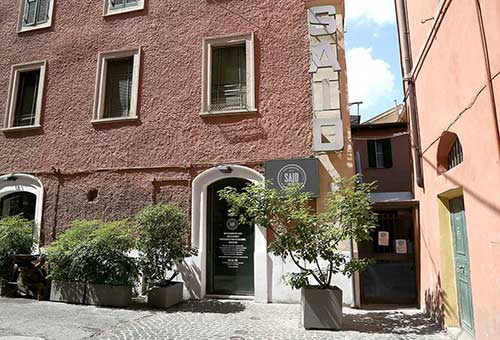About San Lorenzo district
San Lorenzo occupies roughly the two sides of the early stretch of Via Tiburtina, starting from Termini railway station and ending at the Verano Monumental Cemetery. The latter includes the ancient basilica of San Lorenzo fuori le Mura, which the district takes its name from.
Originally a working-class neighborhood (its inhabitants were mostly workers of the Wuehrer Brewery and the freight yard), it has been a popular, left-oriented area. During World War II San Lorenzo was heavily bombed by Allied planes (on 1943-07-19); the only massive bombing of Rome during the war (though not the only air raid on the city), it aimed at disrupting the railway communication pivoting on the nearby huge freight yard; however, it caused also extensive damage to the buildings of the district (including the Policlinico Umberto I and the basilica itself) and killing some 1,500 people.
Maria Montessori’s first 3-6 age program was started in San Lorenzo in 1907.
Today San Lorenzo, due to the vicinity of the La Sapienza University, is increasingly assuming the character of a student and young artist district. Every evening, hundreds of young people descend on the area, much to the chagrin and protests of the inhabitants of the area. Pizzerias, bookshops, boutiques and other modern places are subsequently replacing the old popular workshops and small markets. If you’re tired of Centro or Testaccio’s nightlife, give San Lorenzo a try.
Part of what makes this neighborhood so characteristic is the abundance of street art and graffiti present throughout the area. While the bohemian, controversial decor might be off-putting for some; this artsy feel is exactly what’s drawn young Italians and hipsters to this trendy neighborhood. If street art is not your thing, you can visit one of the largest churches in Rome, San Lorenzo fuori le mura or the imperial arch and gate, Porta Tiburtina, through which the Via Tiburtina exits the city. During its long history, the gate was called also or Porta San Lorenzo, Capo de Bove and Porta Taurina. The gate originally was an arch, built under Augustus, in the point in which three aqueducts (Aqua Marcia, Aqua Julia and Aqua Tepula) passed over the Via Tiburtina.
It was incorporated in the Aurelian Walls by Emperor Aurelian. At the time of Honorius’ restoration, in the 5th century, a second, external opening was built, with five small openings that enlightened the room where the gate was operated.
With time, the gate changed its name into Porta San Lorenzo, because of the presence of the close by basilica of San Lorenzo fuori le Mura. Common people, however, called it Capo de’ Bove or Porta Taurina, since the arch of Augustus was decorated with bull skulls.
San Lorenzo knows no shortage of great little restaurants. Around just about every nook, corner and cranny, you’ll practically stumble upon yet another good restaurant. Whether you’re in the mood for a simple pizza or a hearty plate of pasta, there’s something for everyone here.













